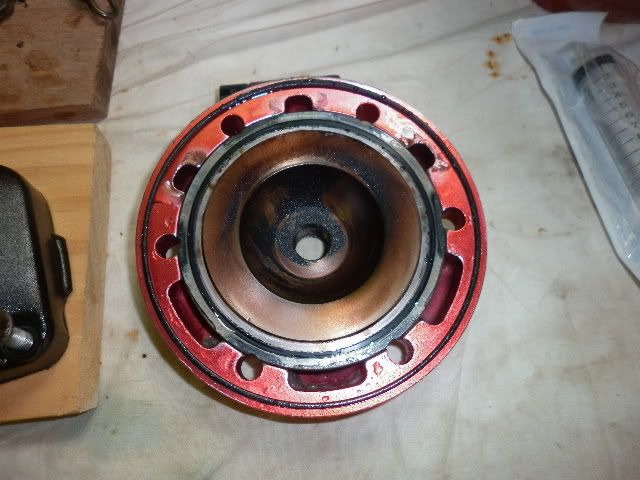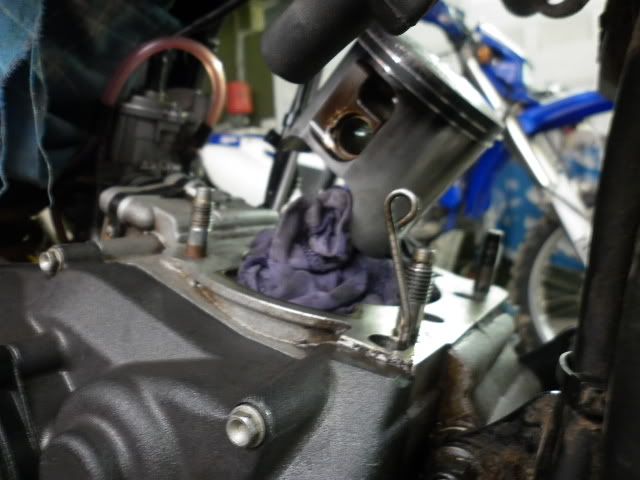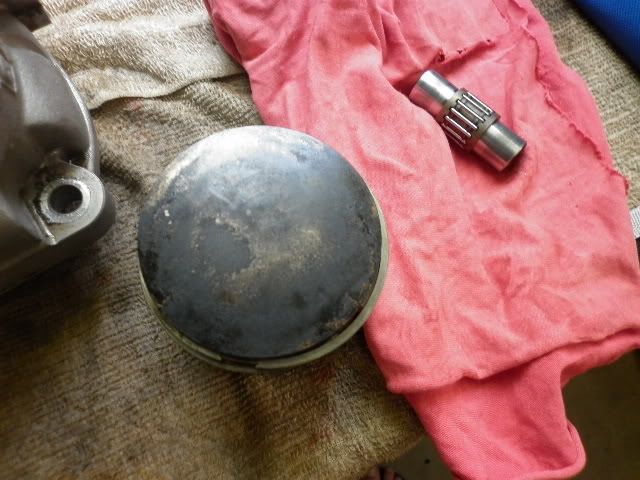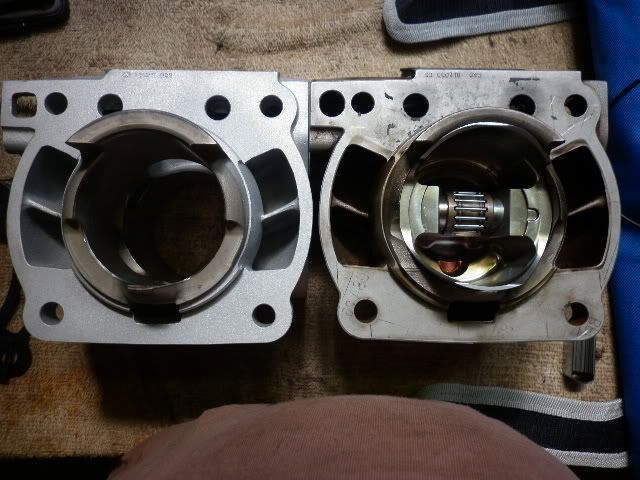Jakobi
Super Moderator
Or poking it into your finger! Do you really not want that experience?
I'm guessing you've been there.. How was it?
Or poking it into your finger! Do you really not want that experience?
Just out of curiosity, as I'll be just snugging everything up to set the port timing, get a squish reading on the head, and CC the trapped volume, do you think it would be safe to just slide the pin in without the clips? The bike will then be pulled back down again straight away. Or is there a big risk the pin will slide out and cause issues? Looking for feedback again
Thanks!






I just did many runs ccing the red head insert using a piece of glass some grase and some metho filing in the plug hole. Came out to 17.5cc and I believe all the head inserts are the same volume.
Deck height was calculated from the squish measurement 2.05mm, and I used a dome calculator (http://www.monolithic.com/stories/dome-calculator) to work out the volume based on a dome height of 3.8mm. All cubic mm were then converted to ml.
Combustion chamber vol = 17.5cc
Deck height volume = 7.27cc
Dome volume = 8.77cc
Trapped volume = (Combustion chamber vol + Deck height volume) - Dome volume
I was wowed to see the figure come out to 16cc. Maybe my measurements weren't so sketchy after all. In any case that gives us a really high CR. Imagine what it would be like if I dropped 1mm of base gaskets.
If anything I now think the measurements I did on the 300 were wrong as they were my first attempt and the maths shows that it should have been closer to 24.12cc instead of 23cc. This gives an uncorrected CR of 13.11:1. What a learning curve these last 2 days have been!
